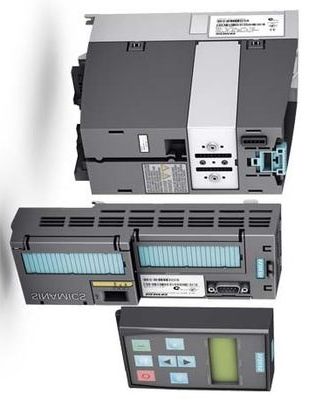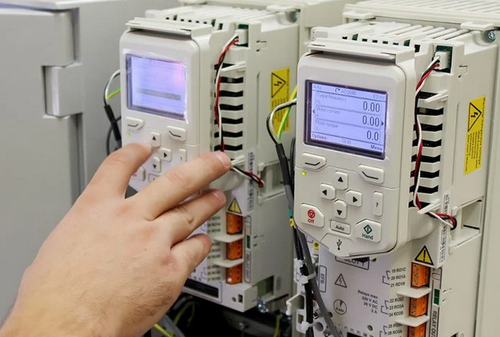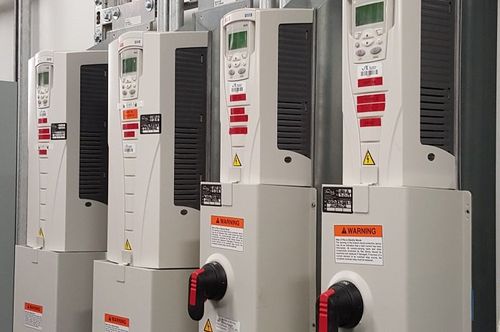How do you select a VFD for a motor?
14.05.2022
If you analyze the prices and functions of frequency converters, you can understand that the price determines the number of built-in functions of the frequency converter. Expensive models have a lot of functionality. But it is better to be guided by the required application conditions to buy VFD.
VFD information: The advantages of using:
- Power savings when the load varies
- Complete motor protection - against overload, overheating, short circuits, power supply problems (sticking, rotation, phase loss)
- Equal maximum starting torque.
- Increase of service life of both the motor and the equipment connected to it due to smooth acceleration and braking of the rotor (no jerks, no hydraulic shocks in the pipelines in pumping application)
- Reduction of the pipeline hydraulic resistance due to the lack of control valve
- Frequency converters are usually equipped with a PID controller and can be directly connected to a controlled variable (e.g. pressure) sensor
- No inrush currents
- Controlled braking and automatic restart in the event of line voltage failure
- Pick-up of a rotating motor
- Stabilization of rotation speed in case of load changes
- Further energy savings from optimized motor excitation
VFD Buying Guide
One of the most important areas of energy efficiency in manufacturing processes is the introduction of energy-saving equipment, which primarily includes variable frequency drives (VFDs) or frequency converters.
Successful implementation of frequency converters to solve various production tasks, first of all, is explained by the widespread of asynchronous electric motors (up to 90% of the market), characterized by a high degree of reliability, simple design, low cost, ease of connection, etc. But these electric motors also have some disadvantages, reducing their scope of application or making them less effective, for example, the impossibility of smooth regulation of the rotor speed and as a consequence uneconomical application for certain tasks, significant starting currents, etc.
To eliminate the above-described disadvantages of asynchronous motors, frequency converters were developed. Frequency-controlled drive or frequency converter is a system for controlling the rotor frequency of an asynchronous (or synchronous) electric motor.
Is the power supply single-phase (220-240 V) or three-phase (380 V)?
An important parameter of the frequency converter is the requirement for the supply voltage.
Converters are generally powered by three-phase AC power, having a voltage of 380 V. This is quite in line with US standards of power supply quality. It should also be noted that there are converters of low power (up to 3.7 kW), which are designed for single-phase 220-240 V.
Type Of Load
Depending on the nature of the load it may be an electric motor with constant or variable speed and power.
The torque and power are determined by the load, the speed required, and the acceleration and deceleration. In addition, the requirements for speed control and rotor position control have to be considered.
Motor current (A) and power (kW)? When selecting the rated power of the frequency converter, we recommend the following steps:
- Determine the rated current of the inverter, which should be chosen equal to or greater than the rated motor current.
- Determine the total output power of the inverter from the rated motor power.
Constant torque load
 One of the important parameters of an electric motor, which is also important in its selection, is torque.
One of the important parameters of an electric motor, which is also important in its selection, is torque.
This value is determined by the product of the force applied to the lever arm and depends exclusively on the degree of load. Whereas in internal combustion motors this load is given by the crankshaft, asynchronous electric motors get their torque value from excitation currents. The value of this torque will depend on the speed of the device rotating in the magnetic field of the stator, called the rotor.
The power requirement can vary depending on the type of product, so constant speed DC motors are a good choice.
Constant power load
Constant power load - this category is of most interest to us. This torque has to do with loads that require low torque at low rotational speeds and require higher torque as the rotational speed increases.
For larger systems, it may be more appropriate to use AC motors with motion sensors, feedback control, and quadrant drives.
Methods of controlling
Some mechanisms must be controlled by varying the speed of the motor smoothly with the rotation of a potentiometer knob, and some require operation at fixed speeds. And in both cases, it can be controlled by the control panel itself or by analog inputs with pushbuttons, switches, and potentiometers. In the latter case, it is necessary to ensure that the number of required inputs is sufficient.
In the case of using an external control device (controller, logic relay, etc.), you must make sure that the technical parameters are coordinated. Usually, they are current or volt signals with ranges of 0...20mA, 4...20mA, and 0...10V, respectively. If the frequency converter is controlled via a network the corresponding interfaces with a communication protocol must be available. Control of the motor can pass automatically for this purpose it is necessary presence of a PID regulator and the possibility to organize feedback from the sensor of the controlled parameter.
Adjustment range
 If it is not intended to reduce the speed of rotation by more than 10% of the rated speed, any suitable inverter can be used. However, if the speed needs to be reduced more than this, and the torque has to be kept as rated, then frequency converters must be capable of maintaining the motor close to zero speed.
If it is not intended to reduce the speed of rotation by more than 10% of the rated speed, any suitable inverter can be used. However, if the speed needs to be reduced more than this, and the torque has to be kept as rated, then frequency converters must be capable of maintaining the motor close to zero speed.
Discrete inputs are needed to input control commands (start, stop, reverse, brake, etc).
Analog inputs are needed for entering feedback signals (drive adjustment and setting during operation).
Digital inputs are needed to input high-frequency signals from digital speed and position sensors (encoders).
The number of inputs is not much, but the more inputs, the more complicated the system can be built, and the more expensive it is.
Number of outputs
Discrete outputs are used to output signals about different events (failure, overheating, input voltage above or below level, error signal, etc.).
Analog outputs are used to build complex systems with feedback. Recommendations for selection are similar to the previous point.
How to size a VFD for a motor
 Sometimes the operating safety factor is indicated on the motor nameplate, otherwise, the operating currents must be multiplied by the service factor to ensure that the inverter is properly sized.
Sometimes the operating safety factor is indicated on the motor nameplate, otherwise, the operating currents must be multiplied by the service factor to ensure that the inverter is properly sized.
The frequency converter overload rating usually results in the frequency converter operating at its rated output current (which can occur for 1 minute out of every 10, depending on the manufacturer), so this overload operation should be treated as its rated current when the VFD sizing chart.
The most critical selection factor:
- Frequency is not an unimportant factor. Its value is determined by production requirements. The smallest value indicates that the speed can be used in the optimum operation. To obtain a higher frequency interval, vector-controlled frequency converters are used. In reality, inverters with a frequency interval of 10 to 10 Hz are often used.
- Frequency converter, which has many different outputs and inputs is convenient to use, but its cost is higher, the setting is more complicated. Connectors of frequency converters come in three types: analog, discrete, digital. Communication of the reverse type of input commands is made through analog connectors. Digital terminals input signals from digital-type sensors.
- When selecting the model of frequency converter, you need to evaluate the control bus. Its characteristics are matched to the scheme of the inverter, which determines the number of terminals. The best choice is a frequency converter with a reserve of the number of connectors for further modernization of the device.
- Frequency converters that can withstand high overloads (15% higher than the motor power) have a preference when selecting. In order not to make a mistake when buying a frequency converter, read the manual. It contains the main parameters of the equipment operation. If you need a device for maximum loads, you must buy a VFD that maintains current at its peak by more than 10% of the nominal value.
Final Recommendations
The choice of a frequency converter is made when designing or rebuilding a drive.
Choosing a device for a machine in a garage or other home equipment is simple, the main criterion is the power and speed control range.
When selecting an industrial inverter, several technical tasks are solved: the tasks of ensuring EMC, the required mechanical characteristics throughout the control range, the calculation of technical and economic efficiency, etc. Many manufacturers provide specialized programs for selection as well as consulting services.
The main parameter when selecting a converter is the electric current consumption of the motor. The total output power of the converter, in this case, must be chosen more or equal to the rated power of the electric motor. The inverters are made for the generally accepted standard power range.
Thus, when simply selecting a variable frequency drive for a single-phase motor of a series known to you, it is enough to determine the required output current and check whether the power of the selected converter corresponds to the power of the electric motor.
If you need any help in choosing and selecting VFD you can contact our specialists. We help you to make the best choice when buying a Frequency Drive.
Eltra Trrade company supply full range of the best VFD Brands: ABB, Siemens, Lenze Inverters, Emotron and others.